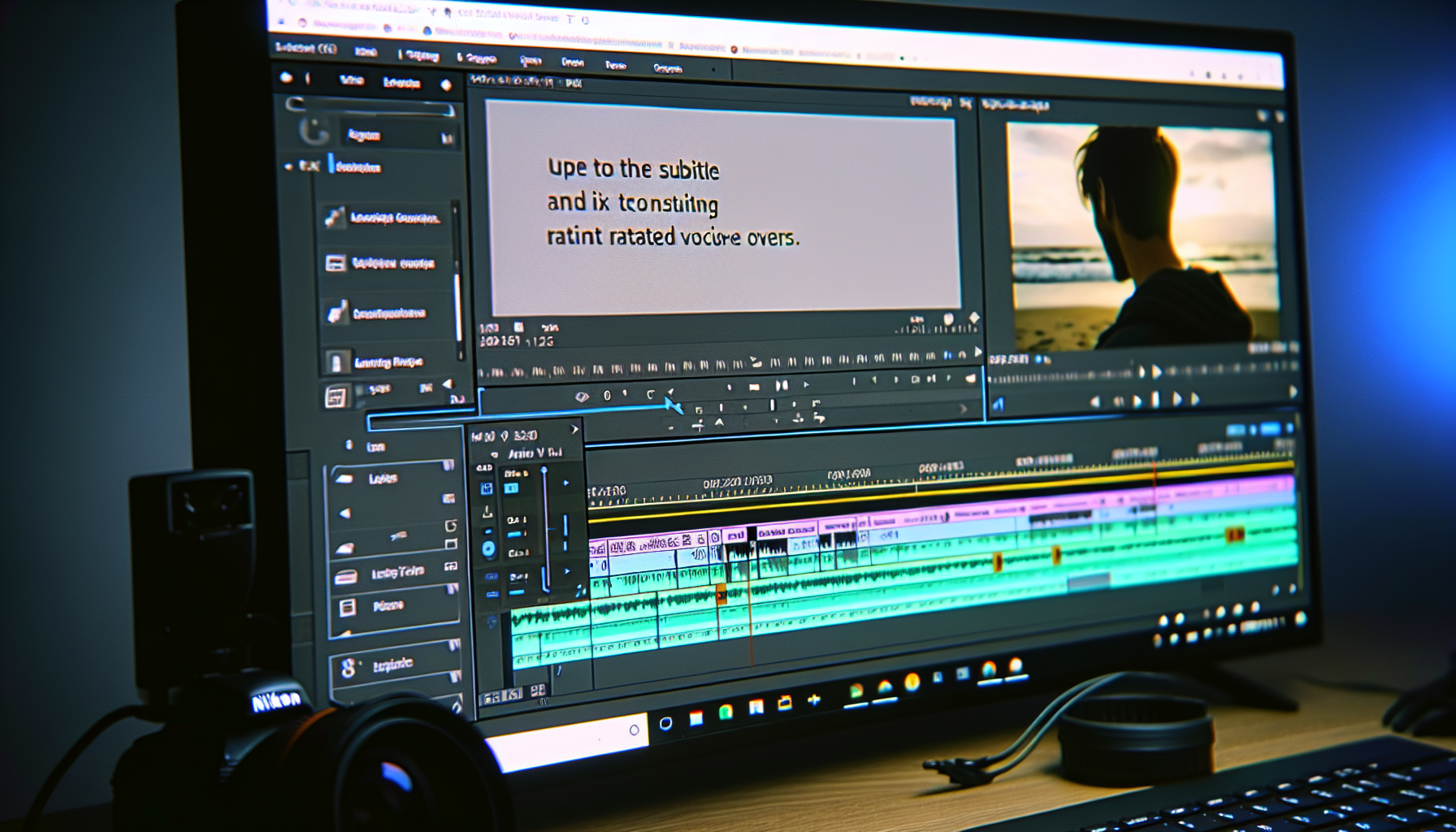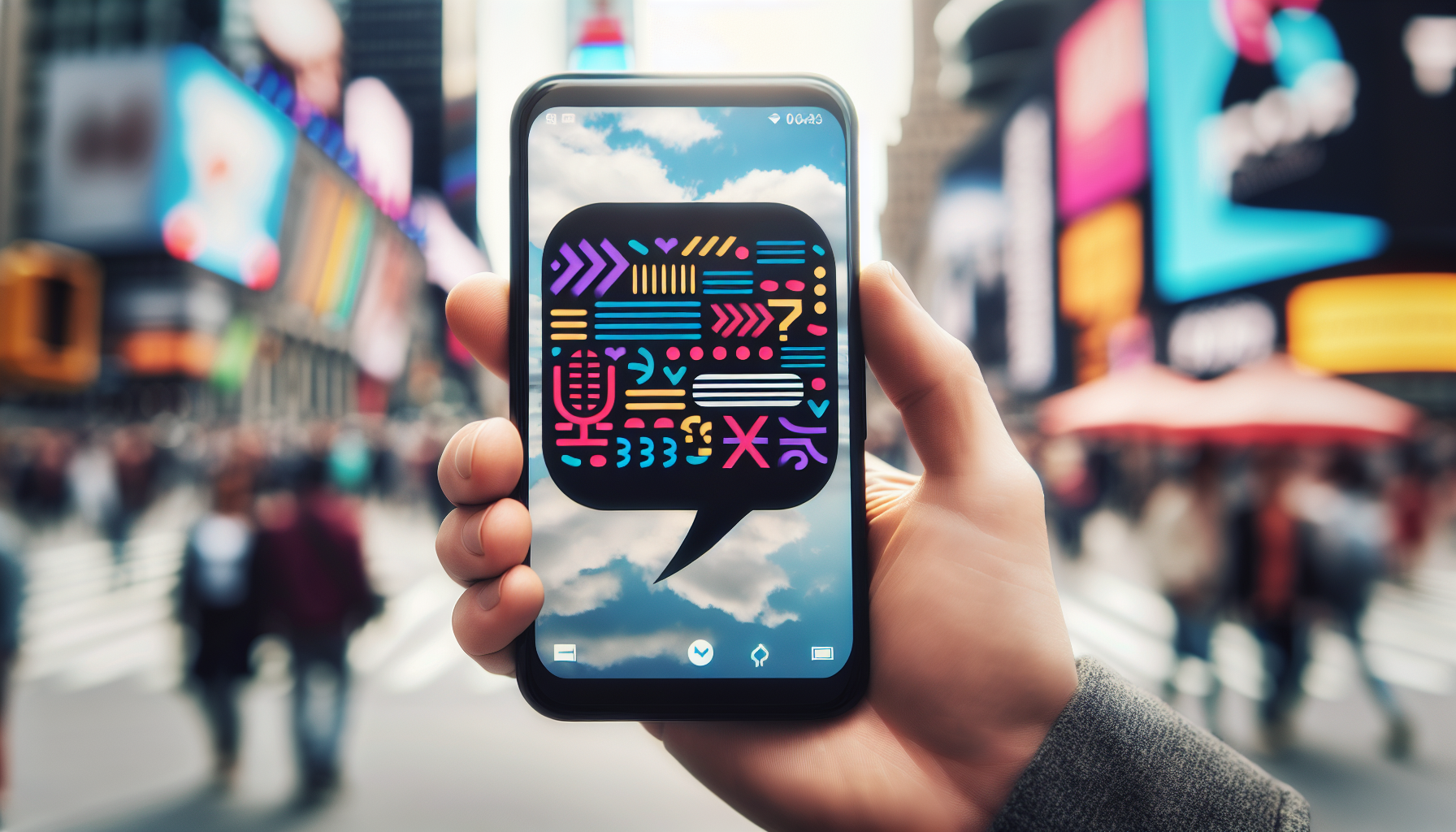Understanding how to translate audio is key to communicating across languages. This guide details the essentials – selecting tools, handling file formats, and navigating translation software. Get ready to turn spoken words into understanding, no matter the language barrier.
Key Takeaways
- Audio translation involves selecting the appropriate tools, understanding file formats, and preparing content, with consideration for accuracy and supported languages, to ensure effective translation.
- The process of converting audio to text for translation comprises upload, transcription, translation, review, and export steps, with potential enhancements like live translation for real-time communication and syncing for video content.
- Translation tools range from free services like Google Translate to paid professional options that provide higher accuracy and advanced features such as voice cloning and custom terminology, with mobile apps offering on-the-go convenience.
Decoding the Basics of Audio Translation

Effective audio translation requires a thorough understanding of its core components. The success of the process depends on selecting the appropriate tool for translating audio files, being familiar with different file formats and properly preparing your content.
In order to ensure quality and accuracy in translated audio, it is crucial to consider these factors as they lay the groundwork for an effective outcome.
Choosing Your Audio Translator Tool
Selecting an appropriate audio translator tool is crucial for successful translation. When making your decision, consider the following factors: cost, supported languages, accuracy, and reputation of the translation provider.
For example, Rask AI offers a wide range of language options and high-precision results. While Microsoft Translator may provide slightly faster translations. Ultimately, it’s important to choose based on specific requirements and preferences.
Understanding Supported File Formats
Once you have selected a tool, it is important to familiarize yourself with the file formats that it can accommodate. These may differ among different tools but commonly include MP3 and WAV. Some tools also support other formats such as AAC, AVI, and MP4.
Using an appropriate format is crucial for accurately capturing and translating audio recordings in your project.
Preparing Your Audio Content for Translation
The final step in the fundamentals of audio translation is preparing your audio content by uploading it to the chosen service, selecting the source language, and deciding on a transcription option that fits their offerings – whether machine-generated or human-produced. This involves ensuring that your file is compatible with the translation service’s accepted formats.
Step-by-Step Process: Converting Audio to Translated Text

After learning the fundamentals, we will now go through a detailed guide on how to convert audio into translated text. With this step-by-step process, you can easily handle the translation from start to finish by:
- Uploading your audio file.
- Creating a written version of the recorded speech.
- Converting the transcribed text into another language.
- Translating and checking for accuracy in grammar and spelling errors in the resulting content.
To begin our journey, let’s dive right in!
Upload and Select Language
The first step to begin the translation process is by uploading your audio file and selecting the desired target language. You can use tools such as Happy Scribe, which allow you to directly upload your file and make choices between machine-generated or human-assisted translations. This initial stage holds great importance as it establishes the groundwork for a successful translation.
Auto Translate Transcripts and Review
To automatically translate your transcripts and ensure accuracy, follow these steps:
- Utilize speech recognition technology-based software to convert spoken language into written text.
- Use AI processing to translate the text into the desired target language.
- Carefully review and correct any inaccuracies in the translated version.
It is important to thoroughly check for potential errors when reviewing the translation and make necessary adjustments accordingly. All information must remain intact during this process, including keywords such as “desired language”, “translated text”, “translate”, “translation”, “language” and references to speech or spoken content.
Exporting Your Translated Audio
The final step in the translation process is exporting your audio files. There are different options for export formats, such as WAV, MP3, AIFF, and xliff, depending on your specific needs. It’s important to consider the quality of your translated audio when selecting an appropriate format. Higher quality may require uncompressed or lossless compressed file types.
Keep in mind that having high-quality translated audio can affect which export options are available for you to choose from. Formats like wav support both compressed and uncompressed versions while mp3 supports only one version and aifc/afc only provide compression options meaning no advantage over wav [alt 1]. Be sure it has enough data otherwise it will break compatibility of existing translators requirement time.
Live Translation: Overcoming Language Barriers in Real-Time

Beyond traditional translation methods, we will delve into the world of live translation. This impressive function can break down language barriers in real time, making it a valuable asset for international conferences, webinars, and live video events.
But what is the extent of languages that can be translated simultaneously in this process? And how does artificial intelligence contribute to its success?
How Many Languages Can You Translate In Real-Time?
Real-time translation is an impressive capability, with some programs offering support for more than 100 different languages. This vast range of language options makes real-time translation a highly versatile tool for overcoming barriers caused by differing languages and promoting communication on a global scale.
The Role of AI in Live Audio Translation
The role of AI in live audio translation is crucial. It utilizes deep learning techniques to interpret and understand the context of a translation, resulting in improved precision and smoothness. AI enables quick translations on a large scale, making it an essential component for live translation initiatives.
Best Practices for Effective Live Translation
To ensure optimal results from live translation, it is crucial to adhere to certain best practices. These include utilizing high-quality audio, providing a pre-written speech for translators or the chosen platform, and using transcription editors with features such as listening capabilities, text editing options, and adjustable speaker identification.
By following these recommended methods of conducting live translations effectively and accurately can be guaranteed. Clear audio must be used throughout the process along with a script provided beforehand either for translators or the designated platform. Making use of advanced transcription tools that allow for listening to recordings while making necessary changes in written text and adjusting identified speakers will also contribute greatly towards achieving successful outcomes.
Enhancing Video Content with Translated Audio

After covering the basics and discussing live translation, our focus now shifts to another fascinating use of audio translation, enhancing video content. By incorporating translated audio or subtitles into your videos, you can increase accessibility and captivate a multicultural audience. To achieve this, it is crucial to effectively translate the audio content for viewers to have a seamless experience.
Adding Subtitles to Videos
Subtitles can greatly improve the accessibility of your videos. Not only do they assist non-native speakers in understanding your content, but they also enhance the SEO of your video.
You can easily add subtitles to your videos using resources such as Movavi Video Editor. By doing so, you can broaden the reach and audience for your videos while maintaining their tone and keeping all necessary information intact.
Syncing Translated Audio with Video
One method to improve your content is by syncing translated audio with video. This process involves coordinating the spoken words in the translated language with specific parts of the video, resulting in a smooth and immersive viewing experience. With appropriate methods and resources at hand, you can effectively synchronize these elements and captivate your audience through well-translated audio on screen.
Advanced Features for Professional Needs
As we delve deeper into the realm of audio translation, there are advanced features specifically designed to meet professional needs. These include incorporating audio clips, voice cloning, and custom terminology to improve the quality of translations and accommodate individual business requirements.
Voice Cloning for Consistent Brand Voice
Voice cloning is an innovative function that utilizes AI technology to recreate a person’s speech in translated audio. It enables the production of voiceovers in multiple languages while preserving the original speaker’s unique tone, making it highly valuable for voice recording purposes.
This can be especially advantageous for companies seeking consistency in their brand messaging across different platforms and diverse language settings.
Custom Terminology for Industry-Specific Translation
Customized terminology, Guarantees precise and consistent translation of terms specific to your industry. Incorporating specialized vocabulary or dictionaries allows for an accurate reflection of the particular terminologies used in your field within translated content.
This greatly improves the precision and efficiency of translations that are tailored to meet the needs of different industries.
Free vs. Paid Audio Translation Tools
After covering the fundamental and more advanced aspects of audio translation, it is important to explore the available tools. Just like other digital instruments, there are both free and paid options for audio translation tools. The question remains: which one should you opt for? To determine this, let’s compare these different versions.
When to Consider a Paid Audio Translation Service
In contrast, paid audio translation services tend to offer more precise and trustworthy results as well as advanced functionalities compared to free options. This makes them a preferable choice for business or professional purposes. These services come at a cost ranging from $0.08 to $0.20 per word depending on the language pair and level of difficulty of the content.
Utilizing Mobile Apps for Audio Translation On-the-Go

In today’s fast-paced society, the capacity to interpret audio in real time offers many benefits. With translation apps designed for mobile devices, one can effortlessly translate spoken language on the go, making it a useful tool for individuals who travel frequently or work in a professional setting that requires quick translations.
Benefits of Using Mobile Translate Apps
Mobile translation applications have various advantages, such as breaking down language barriers and aiding in effective communication. These apps provide instant translations and are user-friendly for convenient usage on the go. The Google Translate app is a revolutionary tool that can greatly benefit those seeking assistance with translations.
How to Translate Spoken Words Using Your Smartphone
With just a simple tap on your smartphone, you can easily translate spoken words using applications such as Rask AI. Real-time translation into any language of your choice is now possible through these handy apps. Whether it’s communicating with an international friend or understanding a foreign movie, the use of such tools makes the task effortless.
Summary
To sum it up, the use of audio translation can effectively break down language barriers and facilitate smooth communication. With an understanding of its fundamentals and advanced features such as voice cloning and customized terminology, this technology offers a wide range of benefits. Whether you are a student, professional, or content creator, incorporating audio translation in your approach to communication can greatly enhance your effectiveness.
- SEO Powered Content & PR Distribution. Get Amplified Today.
- PlatoData.Network Vertical Generative Ai. Empower Yourself. Access Here.
- PlatoAiStream. Web3 Intelligence. Knowledge Amplified. Access Here.
- PlatoESG. Carbon, CleanTech, Energy, Environment, Solar, Waste Management. Access Here.
- PlatoHealth. Biotech and Clinical Trials Intelligence. Access Here.
- BlockOffsets. Modernizing Environmental Offset Ownership. Access Here.
- Source: Plato Data Intelligence.



